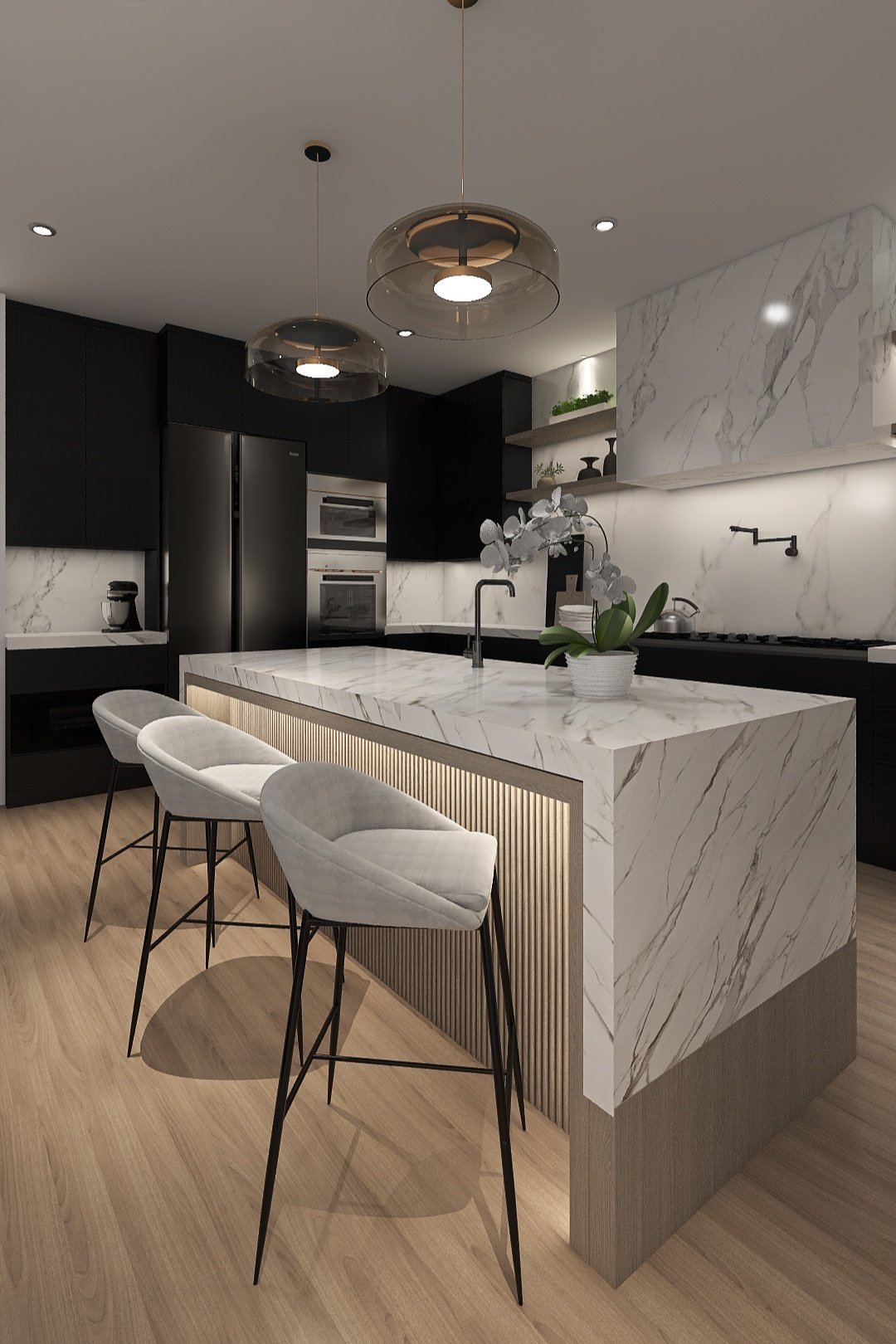how do i layer my lighting? (and why does it even matter?!)
First, lets answer this - why does it matter if we layer our lighting?
So aside from the fact that layered lighting is a key component when it comes to aesthetics and lighting design, (I can’t stand the harshness of ceiling lights, can you?) layered lighting plays a functional role in every space. Each layer completes a specific task.
Imagine a kitchen with just overhead lighting and no under cabinet lighting or an office room with recessed can lights but no desktop lamp.
So, how do we layer lighting in a space?
We have our ceiling lights in place - everything is great there. Next up:
Ambient lighting - alternative, general lighting that adds illumination to a space. So think, pendant lights, chandeliers, or ceiling fixtures.
Once the recessed lighting was set in this kitchen design, I added these island pendants as the ambient lighting
Next, task lighting - task lighting is exactly what you may assume, lighting to illuminate certain tasks. In this example, it would be the table lamp and under cabinet lighting.
Lastly, accent lighting - accent lighting serves its purpose by highlighting design and architectural elements we may want to show off. In this example, I’m utilizing accent lighting for the kitchen island, floating shelves, and the TV unit.
A combination of ambient, task and accent lighting creates a well-balanced and detailed lighting design, and the best part is - we don’t have to try hard to achieve that.



